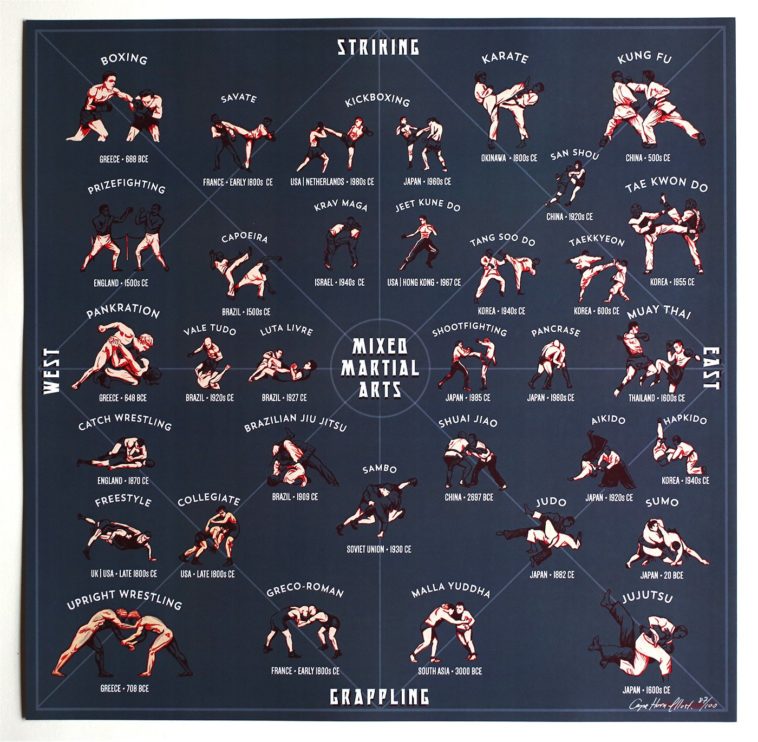The Background And Advancement Of Martial Arts: From Old Beginnings To Modern Techniques
The Background And Advancement Of Martial Arts: From Old Beginnings To Modern Techniques
Blog Article
Web Content By-Clemons Valentine
Step into the world of martial arts, where ancient beginnings and modern-day strategies clash in an exhilarating trip of discipline and self-discovery.
As you explore the history and advancement of this exciting art form, prepare to be captivated by the cultural impacts, technological advancements, and profound ideology that have actually shaped it over centuries.
From the field of battles of ancient worlds to the training premises these days, martial arts have actually stood the test of time, constantly adjusting and expanding.
Each strike, each motion, lugs with it the weight of plenty of years of tradition and wisdom, gave with generations. This is a story of durability, of warriors who looked for not just physical expertise, but also inner strength and harmony.
Join us on this exceptional exploration as we uncover the secrets, the legends, and the transformational power of martial arts.
Prepare to be inspired, challenged, and for life transformed by the background and advancement of martial arts.
Cultural Impacts on Martial Arts
As you explore the background and advancement of martial arts, you'll swiftly find the remarkable ways in which cultural impacts have actually shaped these combat strategies.
From the ancient civilizations of China and India to the much more current growths in Japan and Brazil, martial arts have been greatly affected by the cultures in which they originated.
For example, Chinese martial arts, such as Martial Art and Tai Chi, are deeply rooted in the ideology of Taoism and the idea of Yin and Yang.
In contrast, Japanese martial arts, like Karate and Judo, show the samurai warrior customs and the worths of self-control and honor.
Similarly, Brazilian fighting style, Capoeira, combines elements of African dancing and music, showing the cultural heritage of African servants in Brazil.
These cultural affects not only provide each martial art its one-of-a-kind qualities yet likewise give a much deeper understanding of the historic and social contexts in which they evolved.
Technological Advancements and Martial Arts
With the rise of sophisticated weapons and innovative training devices, you have actually had the ability to enhance your skills and adapt to the ever-changing battle landscape.
Technological developments have actually revolutionized the method martial arts are exercised and taught. Virtual reality simulations now allow you to learn reasonable fight circumstances without the risk of physical damage. see page -speed electronic cameras record every action, enabling you to examine and best your techniques. Wearable devices check your heart rate, breathing, and muscle activation, providing instantaneous feedback on your performance.
Additionally, best white collar crime attorney of customized equipment, such as resistance bands and agility ladders, has enabled you to improve your rate, toughness, and agility. These technical improvements have not just made training a lot more reliable however have actually additionally pressed the boundaries of what is feasible in martial arts, permitting you to get to brand-new heights in your technique.
The Viewpoint and Principles of Martial Arts
The approach and principles of martial arts are deeply rooted fit your way of thinking and instilling discipline, focus, and regard in your technique.
1. Attitude: Martial Arts teaches you to develop a solid and resilient attitude. It enables you to overcome difficulties both on and off the mat, pressing your restrictions and standing firm in the face of hardship.
2. Technique: Martial Arts demands self-control and self-constraint. Via routine training and adherence to strict rules and techniques, you discover to manage your impulses and establish a strong job values.
3. Focus: Martial Arts requires extreme focus and concentration. By training your mind to be existing in the minute, you boost your ability to react swiftly and efficiently during battle situations.
4. Respect: Martial Arts highlights respect for oneself, teachers, educating companions, and challengers. It teaches you to value the skills and experiences of others, promoting a sense of sociability and sportsmanship.
Verdict
Congratulations on completing your trip through the captivating world of martial arts! Throughout this exploration, you have experienced the rich history and impressive development of these battle practices.
From their ancient origins to the modern-day strategies we see today, martial arts have actually been shaped by cultural influences.
The assimilation of modern technology has actually likewise played a significant duty in changing the means martial arts are taught and practiced in the present day.
Nonetheless, it is essential to keep in mind that martial arts are greater than just physical battle. They encompass profound philosophies and leading principles that go beyond the simple act of combating.
Take a minute to assess this obsolete experience and appreciate exactly how the legacy of martial arts remains to thrive in today, transcending time and borders.
